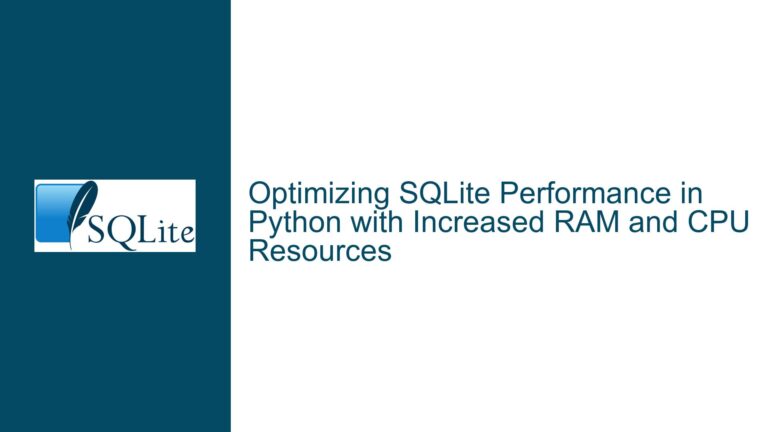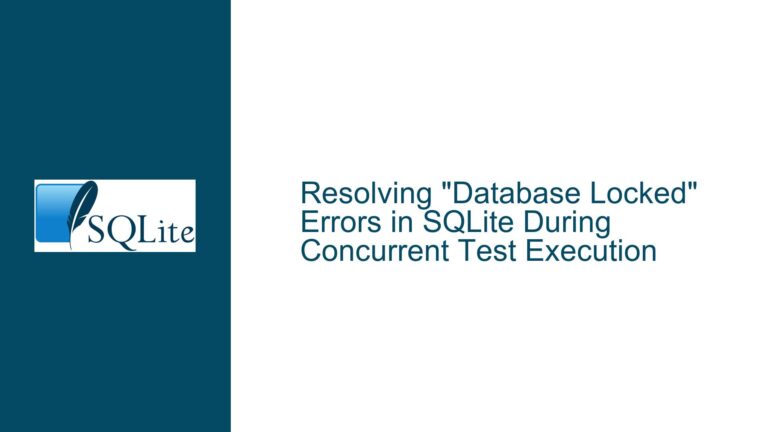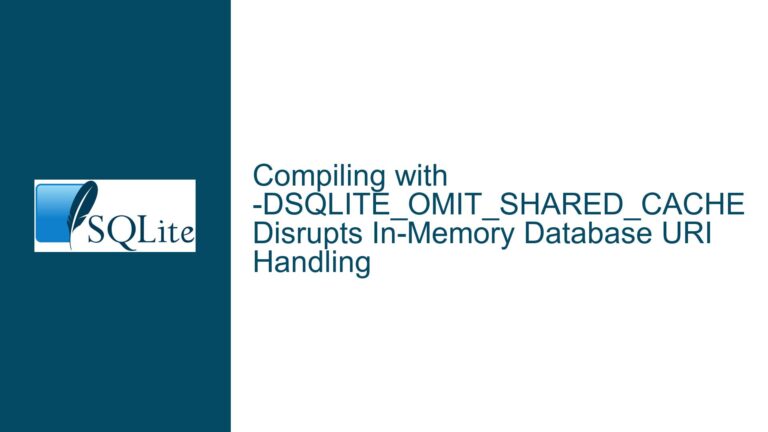SQLite Query Performance Degradation with Always-True WHERE Clauses
Understanding the Impact of Always-True WHERE Clauses on Query Performance
The core issue revolves around a significant performance degradation in SQLite when executing a query with two WHERE clauses that are always true. The query in question involves filtering rows based on a timestamp column, where the conditions timestamp > '1000-01-01' and timestamp < '3000-01-01' are effectively always true given the data range. Despite the presence of an index on the timestamp column, the query executes extremely slowly, taking around 145 seconds to return 1000 rows. However, when either of the WHERE clauses is omitted, the query executes in just 11 milliseconds. This stark contrast in performance raises questions about SQLite’s query optimization strategies and the role of indexes in such scenarios.
The problem is reproducible with a table containing 10 million rows, where the timestamp column is indexed. The query plan chosen by SQLite appears to be suboptimal, as it does not leverage the index effectively when both WHERE clauses are present. This behavior is counterintuitive, especially since the conditions are always true, and one might expect the query planner to recognize this and optimize accordingly. The discussion also highlights that removing the index on the timestamp column results in faster query execution, which further complicates the understanding of how SQLite handles indexed columns in the presence of always-true conditions.
Possible Causes of the Performance Degradation
The performance degradation can be attributed to several factors related to SQLite’s query planning and execution mechanisms. One primary cause is the conservative nature of SQLite’s query planner. SQLite does not assume that the WHERE clause conditions are always true, even if they logically are. This conservatism leads to a query plan that is optimized for cases where the conditions might filter out a significant portion of the data, rather than recognizing that the conditions are always true and can be safely ignored.
Another factor is the interaction between the index on the timestamp column and the ORDER BY clause on the ID column. When both WHERE clauses are present, SQLite may choose a query plan that involves scanning the index on the timestamp column, even though the conditions are always true. This index scan, combined with the need to sort the results by the ID column, can lead to a significant performance overhead. The presence of the index complicates the query plan, as SQLite must decide whether to use the index for filtering or to perform a full table scan. In this case, the index does not provide any benefit, as the conditions are always true, but SQLite’s query planner does not recognize this and proceeds with a suboptimal plan.
Additionally, the discussion suggests that SQLite’s query planner does not take advantage of the fact that the minimum and maximum values of the timestamp column can be quickly determined from the index. If SQLite were to check the index’s metadata to determine the range of values in the timestamp column, it could potentially eliminate the always-true conditions and simplify the query plan. However, SQLite does not perform this optimization, leading to unnecessary overhead in query execution.
Troubleshooting Steps, Solutions, and Fixes
To address the performance degradation caused by always-true WHERE clauses, several approaches can be taken. One effective solution is to use the likely() function in SQLite, which provides a hint to the query planner that the given condition is likely to be true. By wrapping the always-true conditions with likely(), the query planner can make more informed decisions about the query plan, potentially avoiding unnecessary index scans. The modified query would look like this:
SELECT *
FROM Messages
WHERE likely(timestamp > '1000-01-01')
AND likely(timestamp < '3000-01-01')
ORDER BY ID DESC
LIMIT 1000;
This approach can significantly improve query performance, as it guides the query planner to recognize that the conditions are always true and can be optimized accordingly.
Another approach is to disable the use of the index on the timestamp column by prefixing the column with a unary + operator. This forces SQLite to ignore the index and perform a full table scan, which can be faster in this specific case. The modified query would look like this:
SELECT *
FROM Messages
WHERE +timestamp > '1000-01-01'
AND +timestamp < '3000-01-01'
ORDER BY ID DESC
LIMIT 1000;
This approach works because the always-true conditions do not benefit from the index, and a full table scan can be more efficient when the conditions are always true.
In cases where the always-true conditions are known in advance and are not dependent on user input, it may be possible to omit the conditions entirely. This simplifies the query and allows SQLite to choose the most efficient query plan without being constrained by unnecessary conditions. For example, the query could be rewritten as:
SELECT *
FROM Messages
ORDER BY ID DESC
LIMIT 1000;
This approach is only applicable when the conditions are always true and do not need to be evaluated at runtime.
Finally, if the performance degradation is primarily due to the presence of the index on the timestamp column, it may be worth considering whether the index is necessary. If the index is not providing any significant benefit for the queries being executed, it could be removed to improve performance. However, this approach should be taken with caution, as removing an index can have broader implications for other queries that may rely on it.
In conclusion, the performance degradation caused by always-true WHERE clauses in SQLite can be addressed through a combination of query hints, index manipulation, and query simplification. By understanding the underlying causes of the performance issue and applying the appropriate fixes, it is possible to achieve significant improvements in query execution time.






